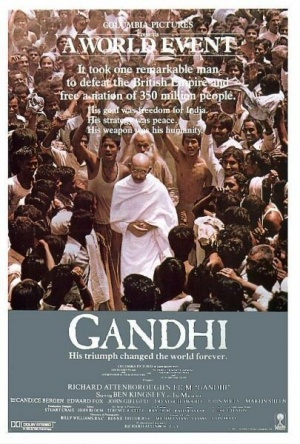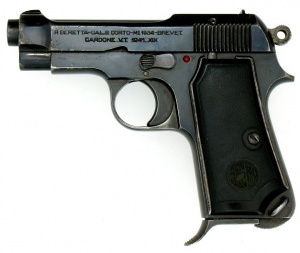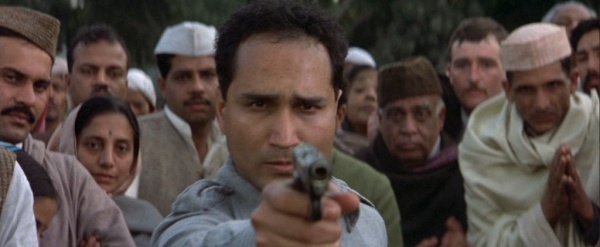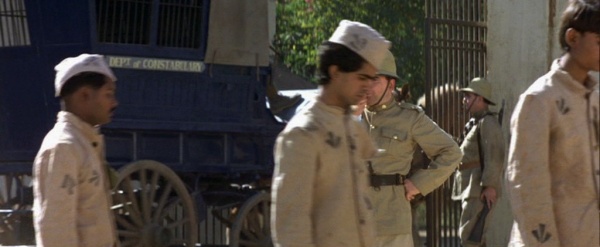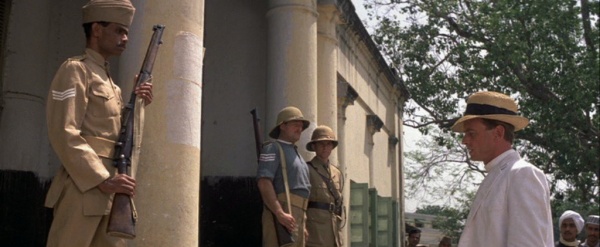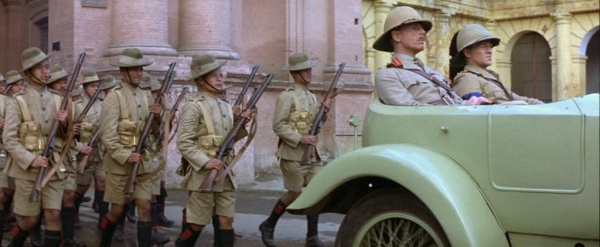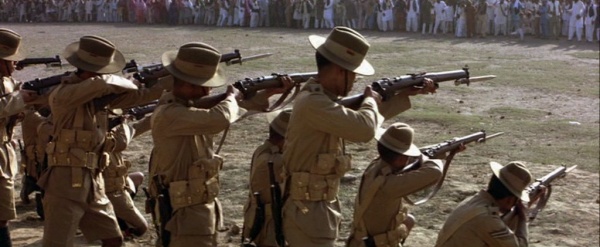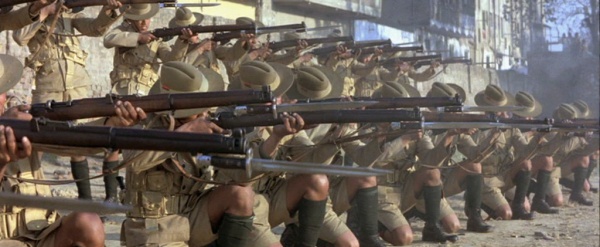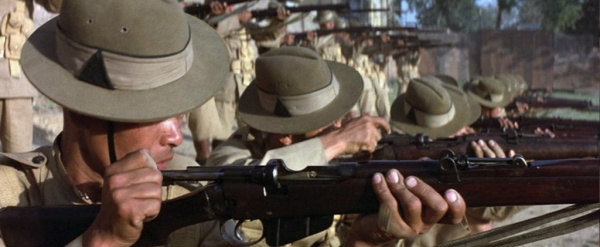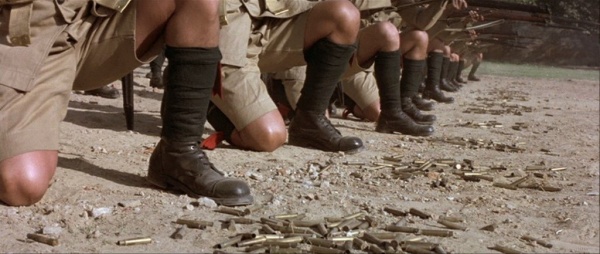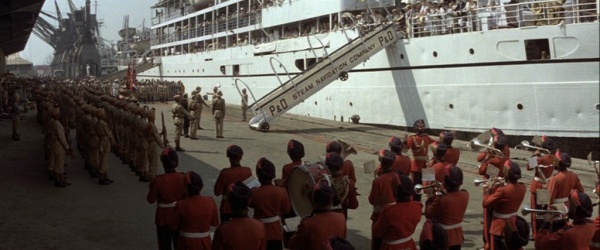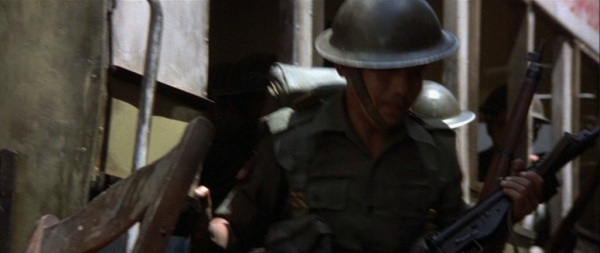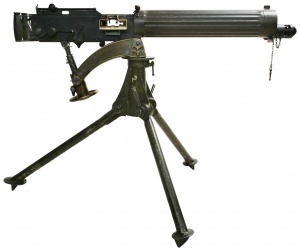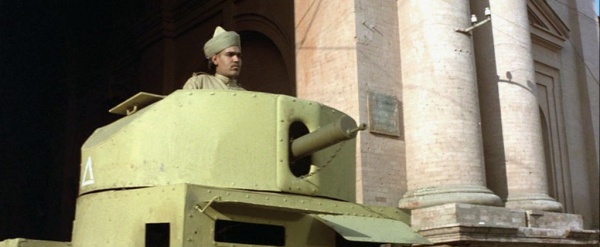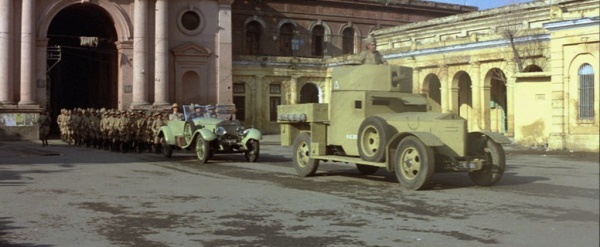| If you have been locked out of your account you can request a password reset here. |
Difference between revisions of "Gandhi"
| Line 31: | Line 31: | ||
[[Image:No43.jpg|thumb|none|600px|Indian sailors parade for Lord Louis Mountbatten as he arrives as Viceroy in 1947.]] | [[Image:No43.jpg|thumb|none|600px|Indian sailors parade for Lord Louis Mountbatten as he arrives as Viceroy in 1947.]] | ||
[[Image:No44.jpg|thumb|none|600px|Gurkhas attempt to keep civil order during clashes between Hindus and Muslims shortly after Indian independence is granted.]] | [[Image:No44.jpg|thumb|none|600px|Gurkhas attempt to keep civil order during clashes between Hindus and Muslims shortly after Indian independence is granted.]] | ||
| + | |||
| + | ==Sten Mk. II Submachine Gun== | ||
| + | A [[Sten]] can be seen in the hands of a Gurkha during attempts to disperse rioters. The Sten provided a cheap alternative to the Thompson submachine gun which the British and commonwealth forces had been importing since the start of WWII. A simple design, although not without issues, the Sten remained in service throughout and beyond. A similar design, the Sterling, would go on to replace the Sten as the submachine gun of the British Army and would be used until the late 1980s. | ||
| + | [[Image:Unitsten2.jpg|thumb|none|400px|Sten Mk II Submachine gun, 9x19mm.]] | ||
| + | [[Image:Stengandhi.jpg|thumb|none|600px|A Gurkha armed with a Sten Mk. II.]] | ||
| + | |||
| + | ==Vickers Machine Gun== | ||
| + | During the scene centered around the Amritsar massacre, a mock-up of a Rolls-Royce armoured car is featured. The traditional armament of these vehicles were [[Vickers]] machine guns, although later models of the vehicle were given heavier weapons. The machine gun mounted on the car in the film seems to be a mock-up also, as it does not resemble any specific design. It is therefore assumed that this is intended to represent a Vickers. Since the gates of the Jallianwala Bagh garden were too narrow to allow an armoured car to enter, the Vickers could not be brought to bear on the crowd. | ||
| + | [[Image:Vickers gun.JPG|thumb|none|300px|.303 Vickers Mk. I.]] | ||
| + | [[Image:Vickers1.jpg|thumb|none|600px|A Vickers stand-in mounted on the armoured car.]] | ||
| + | [[Image:Vickers2.jpg|thumb|none|600px|The mock-up armoured car followed by a contingent of Indian soldiers and Gurkhas.]] | ||
[[Category:Movie]] | [[Category:Movie]] | ||
[[Category:Drama]] | [[Category:Drama]] | ||
[[Category:British Produced/Filmed]] | [[Category:British Produced/Filmed]] | ||
Revision as of 16:59, 20 March 2010
Gandhi is a 1982 biographical film detailing the life of Mahatma Gandhi and his role in campaigning for the freedom of India from Britain. The film follows the story of Gandhi from his days as a young lawyer fighting government repression of Indian workers South Africa to his campaigns of nonviolent resistance against the British in India, culminating with the nation's independence in 1947.
The following firearms were used in the film Gandhi:
Beretta Model 1934
Nathuram Godse infamousley used a Beretta M1934 on January 30 1948, firing three times at Gandhi at close range. This event is featured in both the opening and closure of the film.
Martini-Henry Rifle
Whilst Gandhi is spending some time in a South African prison, guards in the background are seen armed with Martini-Henry rifles. Whilst the exact model of the rifles featured is difficult to make out, the length of the operating leaver would suggest that they are no later than Mk. III variants. The Mk. IV model that followed was characterised by a longer lever which aided the extraction of cartridges.
Short Magazine Lee-Enfield (SMLE)
The Short Magazine Lee-Enfield (SMLE) is seen throughout the film in the hands of British and Indian soldiers as well as Gurkhas recruited fron Nepal. Given that the film was shot mainly in India, most of these Lee-Enfields are likely to have been built or at least refurbished in India at the factory in Ishapore. Some examples can be seen with squared-off foresight protectors which confirm this.
Lee-Enfield No. 4
Some soldiers can be seen with Lee-Enfield No. 4 rifles. Even after the introduction of the No. 4, production of SMLEs continued in India where they can still be found in the hands of police forces. No. 4 rifles were not built in India but were produced in Pakistan post-independence.
Sten Mk. II Submachine Gun
A Sten can be seen in the hands of a Gurkha during attempts to disperse rioters. The Sten provided a cheap alternative to the Thompson submachine gun which the British and commonwealth forces had been importing since the start of WWII. A simple design, although not without issues, the Sten remained in service throughout and beyond. A similar design, the Sterling, would go on to replace the Sten as the submachine gun of the British Army and would be used until the late 1980s.
Vickers Machine Gun
During the scene centered around the Amritsar massacre, a mock-up of a Rolls-Royce armoured car is featured. The traditional armament of these vehicles were Vickers machine guns, although later models of the vehicle were given heavier weapons. The machine gun mounted on the car in the film seems to be a mock-up also, as it does not resemble any specific design. It is therefore assumed that this is intended to represent a Vickers. Since the gates of the Jallianwala Bagh garden were too narrow to allow an armoured car to enter, the Vickers could not be brought to bear on the crowd.
